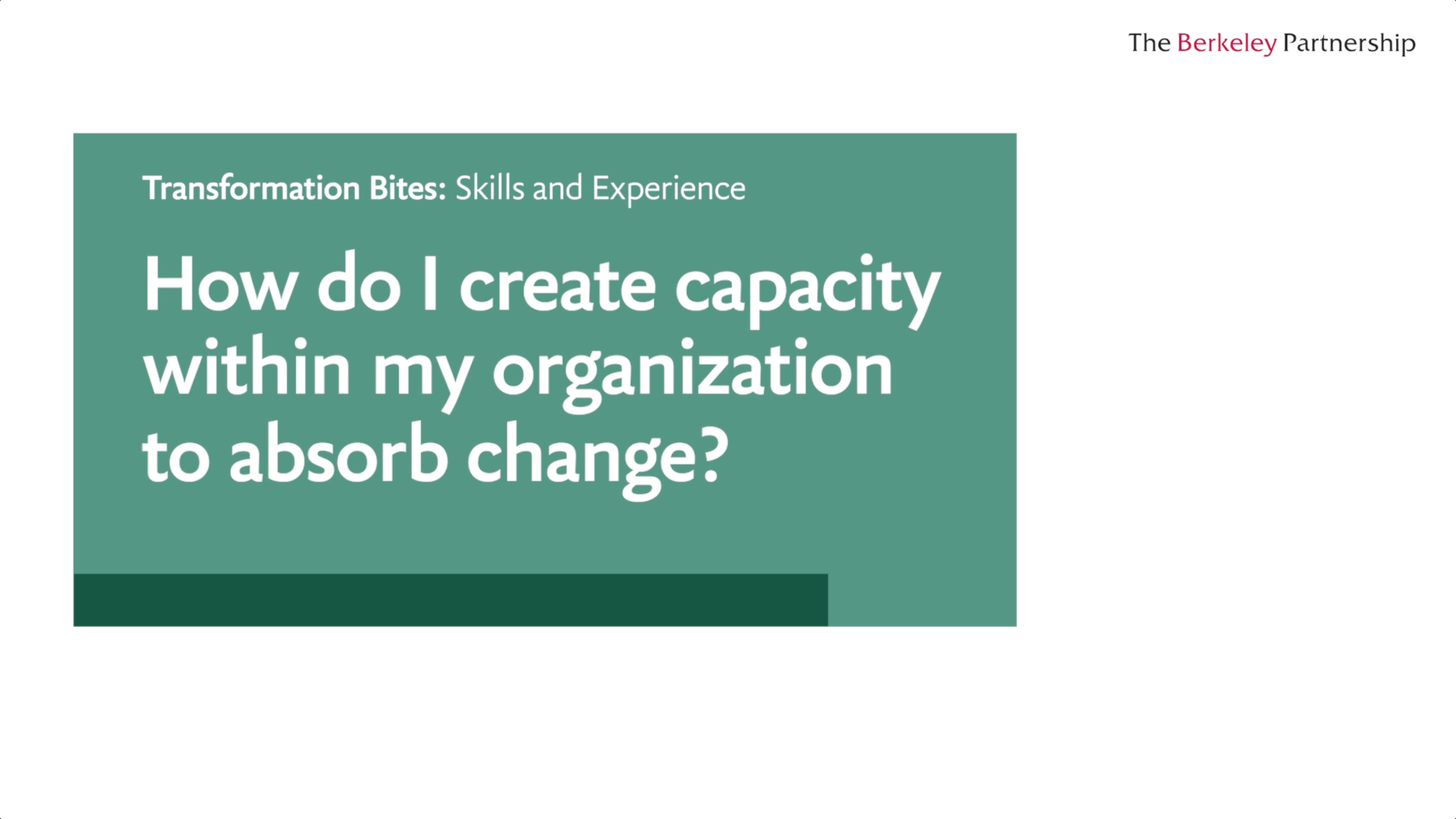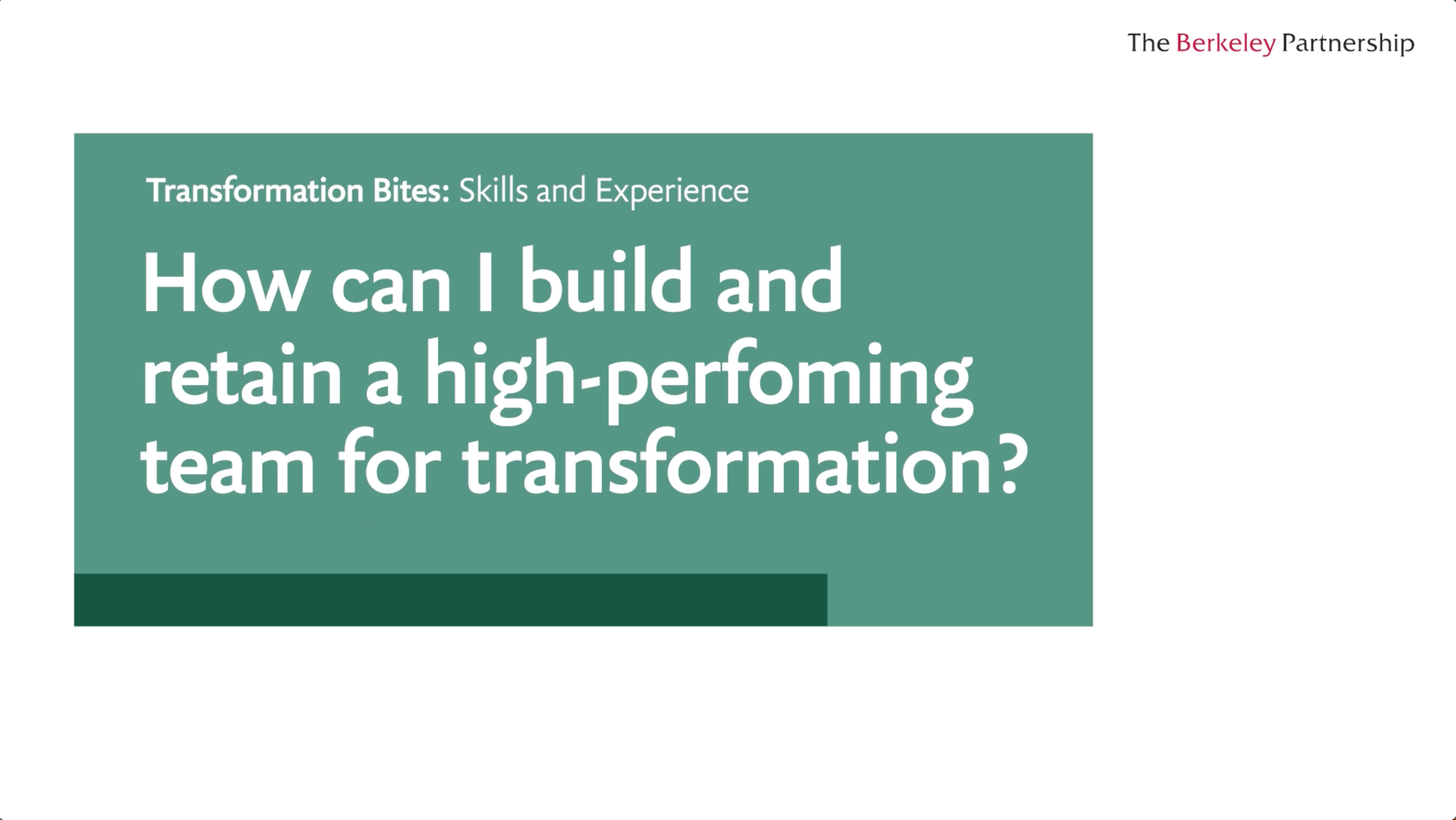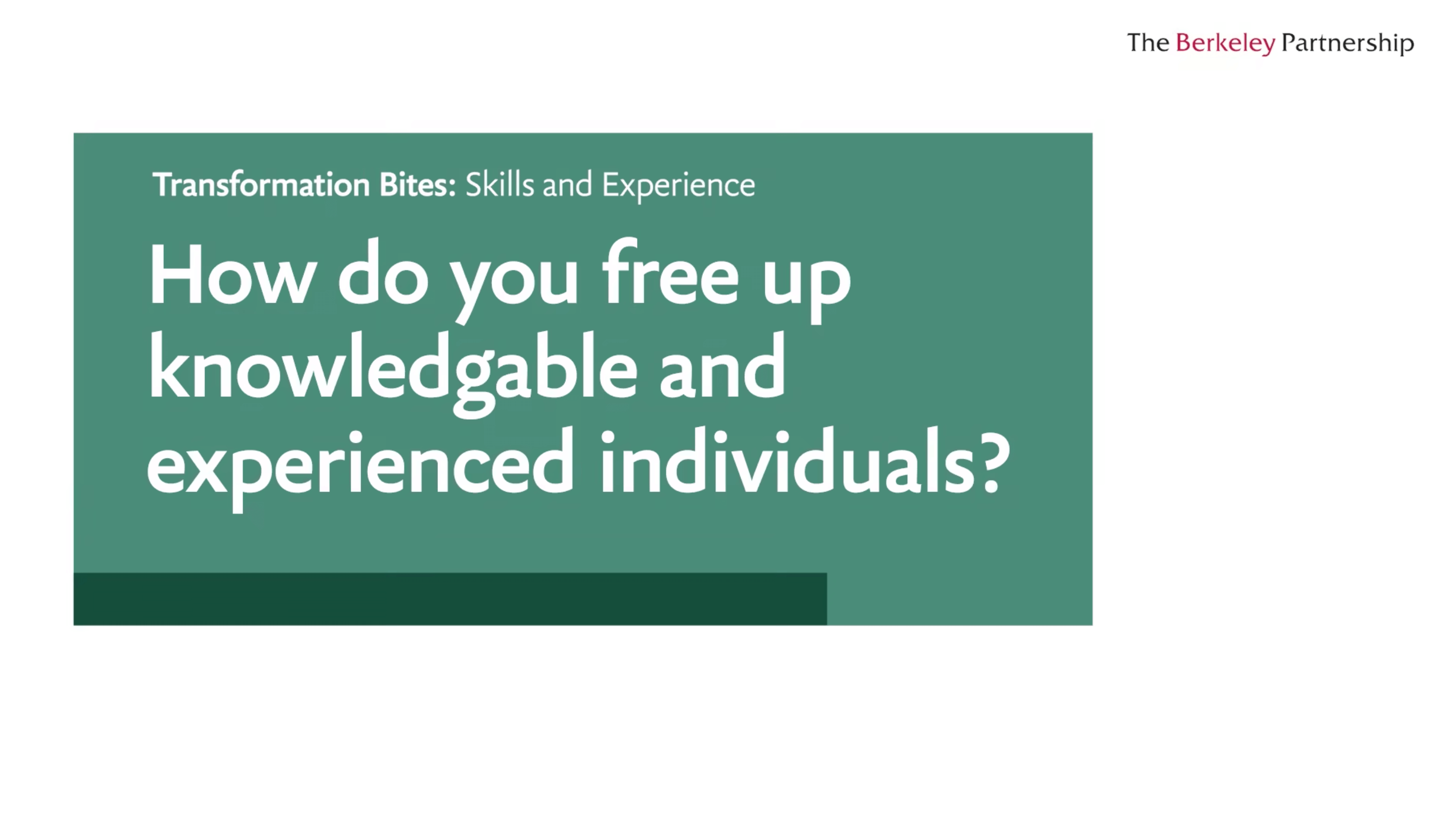Transformation
Transformation outcomes
Watch now: How can I optimise partner relationships?
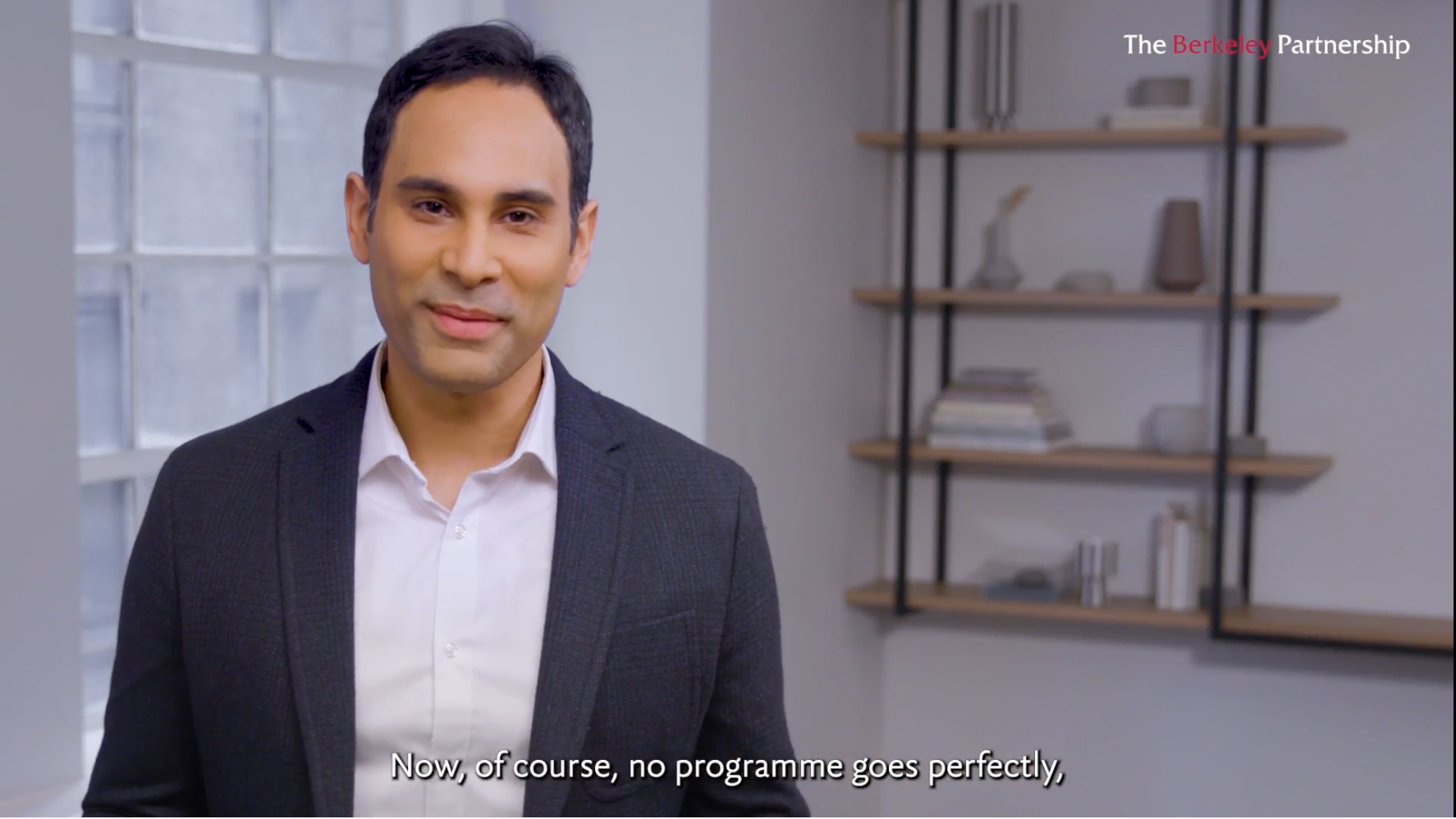
Pavit: Many client projects require balancing and sequencing multiple partners along the way. So maintaining and building relationships with all partners involved is a critical path to success. It's important to start by establishing clear roles, responsibilities, and expectations. Spend a bit more time upfront to define and agree on shared outcomes and understand the best ways of working together. Now, of course, no programme goes perfectly, so give real-time feedback to others, but keep your ears open because the communication should go both ways. Recognise not only what you need from each partner, but what they might need from you. This will help enhance everyone's contributions, create a collaborative environment, and foster a positive relationship.
More on skills and experience
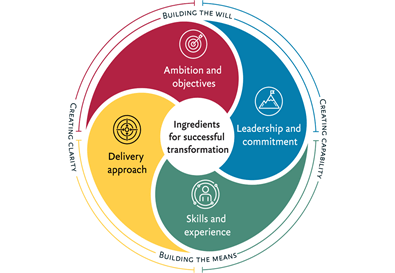
The ingredients for successful transformation
Transformation is ambitious and promises great benefits. But it's also often complex, challenging and daunting. No matter where you are on your journey, you need four key ingredients to achieve success.

Transformation health check
Use our quick and easy online health check to assess whether you have the key ingredients in place for successful transformation.

